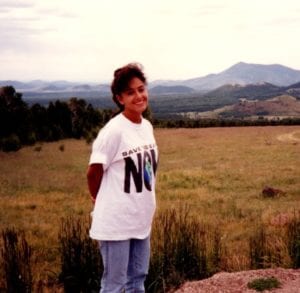I often hear from parents who say their child is not interested in STEM (science, technology, engineering and math). Kids will make statements like, “I do not like math or science,” or “I’m not good at math and science,” or “I am not interested in learning about science, engineering or computer programming.”
Recognizing that technology is and will continue to be an important engine of growth for our economy, it is more important than ever that today’s children are well versed in technology and have the necessary skills to enter college and the workforce. Therefore, it can be disappointing and frustrating when children voice negative thoughts and perceptions about their tech aptitude and shut themselves off from opportunities.
It is important that we help our children stay open-minded to all kinds of possibilities in their formative years. I am not suggesting that we all need to be scientists and engineers, but given the important role technology has in our world, parents, teachers and mentors need to help children envision the positive experiences that could come from working in a STEM or STEM-related job.
What can you do if your child is not interested in STEM?
If your child does not think they have an aptitude for or an interest in STEM but you want them to be open to opportunities, I would consider reframing the conversation and talk about what issues and problems matter to them. I expect that most kids have faced a problem in their lives or have discovered an issue they really care about. Perhaps it’s a problem related to their pet, the environment, or a health concern faced by a family member or friend.
They key is to focus on problem solving. Talking about problems that matter to kids can be a great way to start a conversation about how to solve problems by finding solutions. You can learn about what they believe in and how they feel. From there, you can talk about how they could be part of solving some of today’s real-world problems, such as global warming, overpopulation, access to fresh water, quality healthcare, etc. The idea here is to help them understand how they can use their skills and talents to help society and make a difference.
The Environment

I recently spoke with a friend, Kim Lundgren, who is CEO of Kim Lundgren Associates, Inc. (KLA), a benefits corporation that delivers customized solutions for local governments to create the sustainable community they want. One of KLA’s core solutions- the KLA Sustainability Dashboard- is a communications platform that guides local governments to tell their story, track progress towards goals, & engage community members to be part of the solution. She loves her work and enjoys helping make a difference in local communities.
I asked her what made her want to work in the sustainability field and she said that it dates back to when she was a kid. She remembers reading an article in Scholastic News and learning that baby seals in the Arctic were being clubbed by poachers for their pelts. She was so mad that she was “ready to go to the Arctic and save them.” Looking back, she realizes that it was at that moment that she discovered her true passion and is thrilled that despite hurdles she never stopped working toward her mission to help save the Earth.
MIT Hackathon- Elder Aging at Home
 Last month, I attended a hackathon at MIT’s Sloan School of Management that addressed a timely and complex challenge – helping seniors age gracefully and healthily in their homes. (Hackathons are short-term projects where individuals or teams brainstorm ideas and design products and services.) In this case, students were tasked with using technology (i.e., internet connected sensors and wearables) to develop business solutions that would help elderly people live on their own with better health outcomes and quality of life.
Last month, I attended a hackathon at MIT’s Sloan School of Management that addressed a timely and complex challenge – helping seniors age gracefully and healthily in their homes. (Hackathons are short-term projects where individuals or teams brainstorm ideas and design products and services.) In this case, students were tasked with using technology (i.e., internet connected sensors and wearables) to develop business solutions that would help elderly people live on their own with better health outcomes and quality of life.
Four teams of students presented their business plans on the final day of the hackathon, and I was impressed with their ideas and the empathy they demonstrated in the services they designed for the elderly. Although this was a business exercise that utilized technology as the basis for the services, it was obvious the students approached the project from an elderly person’s standpoint and developed solutions that would help people stay in their homes with dignity and happiness and connect them with their friends, family and the community.
Final thoughts
I like these two stories because they focus on people solving problems. The first story is an example of how a news story got a young girl excited about science and the environment at a young age, leading to a rewarding career. The MIT story is an example of how technology can be used to help the elderly stay in their homes longer, which is what most people want.
I wanted to share these real-world examples because they are the type of problems kids understand and will care about. Developing an enthusiasm for STEM from a problem-solving standpoint might be the hook needed to gain a child’s interest. Hopefully, they will want to learn more and figure out what knowledge they need in order to solve problems. Perhaps your child can do a research project for school or attend an after-school program or summer camp that aligns with their area of interest. You never know when something that captures their interest at a young age might turn into a lifelong passion or career.







